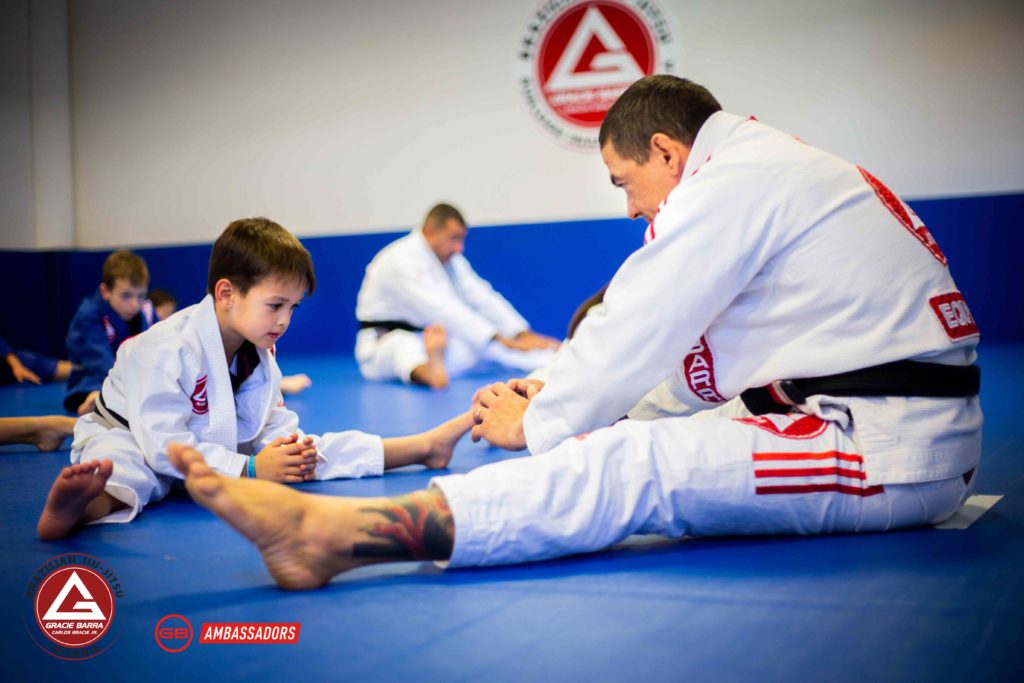GB student question “Do I need to be really flexible for Jiu-Jitsu?”

A Gracie Barra student messaged with the following question “I’ve been training for a few months and am not very flexible. Some of the blue and purple belts at the school play inverted guard. I am not flexible enough to do that position without hurting my neck. How flexible do you need to be to do Jiu-Jitsu?”
ㅤ
This is a good question and one that a lot of new Jiu-Jitsu students ask. Also, Jiu-Jitsu students over the age of 40 observe the 20-something competitors who seem to invert effortlessly and wonder if inversion and the flexibility to do so is necessary to improve their own Jiu-Jitsu.
ㅤ
When many people think of martial arts and flexibility they think of movie scenes where actors like Jean Claude Van Damme is performing a full spilts suspended in between 2 chairs while flute music plays in the background. It makes for a great movie scene, but the truth is extreme flexibility of this sort is NOT required for Jiu-Jitsu.
ㅤ
You DO require a certain level of flexibility for Jiu-Jitsu – true. And the majority of experienced Jiu-Jitsu belts will be significantly more flexible than the average individual. But not the levels of superhuman flexibility like we see in Cirque du Soleil acrobats.
ㅤ
Flexibility is important in Jiu-Jitsu for several reasons.
ㅤ
1) Full range of motion will allow you to perform the techniques properly. Do you remember first learning the arm bar from the guard? You might have had difficulty swinging your leg over your opponent’s head to complete the movement. If your hips are tight, performing some of the movements from the bottom will be not so efficient.
ㅤ
2) Flexibility will make you more difficult to submit. This is particularly important when it comes to submissions that involve the shoulder joint – like Americana and Kimura locks and the omoplata. Working with different training partners who possess varying levels of flexibility, you will immediately see how someone with limited range of motion in the joint must tap much sooner than another with an average level of shoulder flexibility.
ㅤ
3) Guard retention. There is no doubt that having a greater degree of flexibility in the hips and spine makes for better guard retention ability. Do you have a guy or girl in your gym who can put their knees in their armpits making it almost impossible to get past their legs? They can sneak a hook in from any position and replace their guard. If they can invert, you can be 90% past their guard only to have them quickly invert and put you back in guard before you know what happened!
ㅤ
That said, inverting is not the only strategy for guard retention and inverting does place a certain amount of stress on the cervical spine.
ㅤ
Master Carlos Gracie Jr says:
“I don’t get this obsession with all of the acrobatic guards. They are efficient, sure. But they’re fleeting. Your body has difficulty understanding them for too long. I say this from my own experience. The lumbar region, for example, as strong as it may be, will never be armored against the passage of time. Jiu-Jitsu is for your whole lifetime, and by that line of reasoning you can rest assured that the basic techniques like the closed guard or this open guard I enjoy doing, will never abandon us. At 70 we’ll still be capable of performing them with plenty of mobility. That can’t be said of the tornado guard or the berimbolo.”
ㅤ
4 Resilience from joint injuries. Protecting our knees, elbows, shoulders and necks from training injuries is perhaps the most important reason to be flexible for Jiu-Jitsu. A flexible joint is less likely to give under pressure or have tendons or ligaments at risk of tearing. A flexible muscle has that much more of an insurance policy against possible injury.
ㅤ
Practicing Jiu-Jitsu over a period of time will require us to use our joints through their full range of motion and we will quite naturally develop our flexibility through performing the various movements. Most bjj classes involve some stretching and a little goes a long way to improving your basic flexibility. Many Jiu-Jitsu students are big advocates of adding a few yoga sessions per week to develop optimal flexibility. Several +35 aged Jiu-Jitsu students I know are adamant that doing yoga keeps them on the mats.
ㅤ
ㅤ
Credits: Mark Mullen
Gracie Barra Black belt based in Asia
